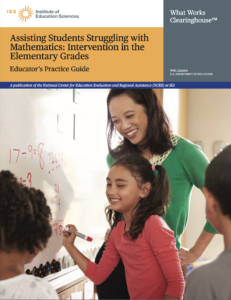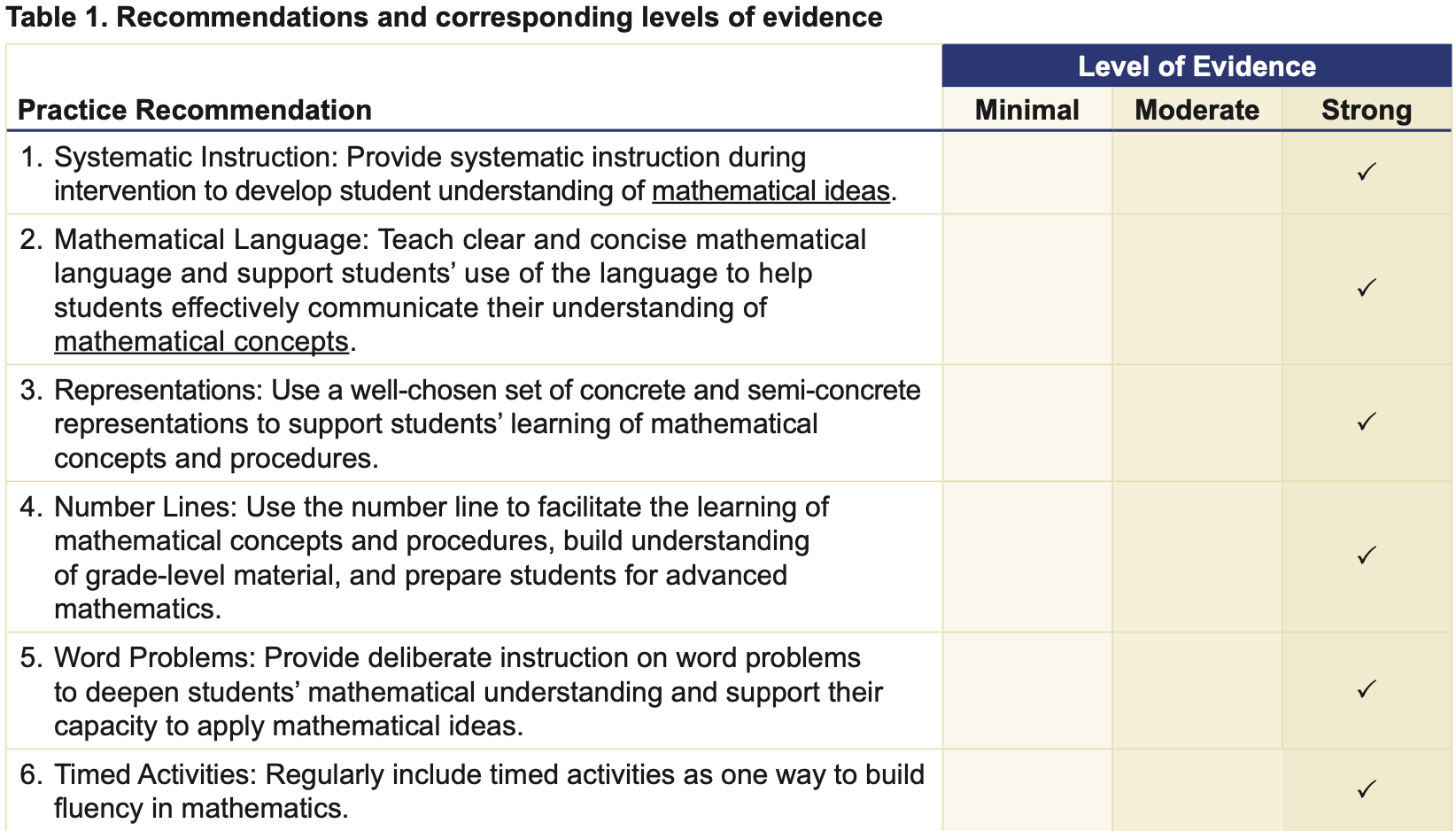By James C. Sherlock
In investigative reporting on education in Virginia, I regularly refer to the federal Department of Education’s Institute for Education Sciences (IES) and its What Works Clearinghouse (WWC).
The Education Sciences Reform Act of 2002 (ESRA; amended in 2004) Part A established the Institute of Education Sciences.
Section 111 establishes IES as a research institute within ED.
The mission of IES is to provide national leadership in expanding fundamental knowledge and understanding of education from early childhood through postsecondary study, in order to provide parents, educators, students, researchers, policymakers, and the general public with reliable information.
This information is to address (1) the condition and progress of education, (2) practices that improve academic achievement, and (3) the effectiveness of federal education and other education programs.
IES must carry out its mission by compiling statistics, conducting research and evaluations, and disseminating information in a manner that conforms to high standards of quality and objectivity.
The IES was established under the oversight of the National Academies of Sciences, Engineering and Medicine to sort out the claims of sponsors of various educational interventions.
Professors and their PhD or EdD candidates in schools of education have tended to examine their own theories with studies as they can find grant money.
Those studies earned a very bad reputation for lack of scientific testing and proven efficacy. Sometimes because the sponsor did not have enough money to do it right.
But they are published anyway. It’s a free country.
People with an agenda can and do cherry-pick evidence for articles and presentations supporting their favored policies. They then tour education symposia.
That was the problem that IES was created to solve.
The Virginia Department of Education (VDOE) has long ignored the proven solutions IES has offered.
They often choose instead among educational intervention prescriptions favored by those schools of education and the less stringent standards bodies that support them. And they document it.
Doing so bucks the standards under which Virginia receives federal education funds.
It is a mistake even if there were no dollars at risk.
Mathematics standards. The VDOE web page on math makes no mention of IES or its WWC.
Neither does its page on Mathematics Instruction Resources.
So, unsurprisingly, neither does the Virginia 2023 Mathematics Standards of Learning approved in August by the Board of Education.
Let the authors of Mathematics Standards speak for themselves.
The following resources were central to informing this revision and ensuring that these standards are best in class:
- National Assessment of Educational Progress (NAEP) Framework (2026);
- National Council of Teachers of Mathematics (NCTM) Principles and Standards for School Mathematics (2000);
- NCTM Focus in High School Mathematics: Reasoning and Sense Making (2009);
- Pre-K–12 Guidelines for Assessment and Instruction in Statistics Education II (GAISE II) report (2020) from the American Statistical Association;
- Mathematics and College Career Readiness Standards (ACT, 2022), SAT Suite of Assessments (2014) – Mathematics Test Details.
The Virginia Mathematics Standards of Learning are built to ensure that our standards:
- Are best in class, and are some of the most challenging in the nation as they are benchmarked against NAEP, ACT, and SAT;
- Reinforce foundational mathematics skills and facts to ensure that students can accelerate at their own pace;
- Ensure students can apply mathematical concepts in their career and college pathways; and
- Are designed to ensure mastery from grade to grade and provide an opportunity for students to demonstrate competency before the next skill.[Emphasis added.]
It makes no sense, and did not in the version that this updated, but there it is, and has been for years. No mention of IES.
There is boasting starting on page 2 that Virginia’s standards “Ensure Every Student Builds Strong Mathematics Foundational Skills.”
Notably, the math SOL assessment exams are tailored to those Virginia standards.
Which may or may not be “best in class.”
Math wars. As a concrete example, readers may be aware of the “math wars” ongoing in academia. They have been fought for decades. The article at the link is from 2002. This one is from 2023.
Math teachers almost certainly are aware of the issues.
But for a teacher with a class in front of her, they are of no immediate interest.
If those disputes are settled with scientific testing and strong evidence of efficacy of one approach, the winner will appear in a WWC Practice Guide.
Students struggling with math. Let’s look at the Practice Guide Assisting Students Struggling with Mathematics: Intervention in the Elementary Grades, published in March of 2021. It is designed to be used by teachers providing mathematics intervention for students with disabilities and other learning issues in grades K-6.
Like after Covid.
Based on SOL results, students struggling with math include at least the 31% of Virginia public school students who failed math SOL assessments in 2022-23. Many subgroups of students fared far worse.
Scroll through the full guide to get a feel for the breadth and depth of what the authors have provided.
Table 1 on page 3 of the Introduction (above) shows there is strong scientific evidence for each step.
Read the document and you will not doubt it.
Virginia has a definition for remedial program – “A program designed to remedy, strengthen and improve the academic achievement of students who demonstrate substandard performance.”
It is notable that VDOE has published no standards for teaching remedial math or any other subject to such students.
A suggestion: publish Assisting Students Struggling with Mathematics: Intervention in the Elementary Grades (March 2021) from IES as an SOL.
Math practice guides. Current strong evidence Practice Guides for K-8 math are:
- Preparing Young Children for School
- Assisting Students Struggling with Mathematics: Intervention in the Elementary Grades
- Improving Mathematical Problem Solving in Grades 4 Through 8
Those with moderate evidence for K-8 math include:
- Teaching Strategies for Improving Algebra Knowledge in Middle and High School Students
- Teaching Math to Young Children
Kindergarten and first grade.
The new Virginia SOL tells teachers how to teach math in kindergarten and 1st grade, indeed all the grades.
Teaching Math to Young Children above offers five recommendations for teaching math to children ages 3 to 6. So it even applies to pre-school.
Everything for which WWC found even a minimal evidence base by 2013 is there. There are 45 pages dedicated to how to implement these things.
VDOE can search here to find studies since 2013 with strong or moderate evidence that match their objectives. They then can check those to see if those studies have uncovered anything that would modify Young Children. I see a few that might, but they might also confirm it.
Cross-walk. Someone at VDOE should have checked Virginia’s new math Standards of Learning with the IES standards before it was presented to the Board of Education. Boards of Education in the future should insist on it.
But by the quoted description of the references, no such search was done.
My own quick side-by-side review of those five Guides with the new math Standards of Learning indicates that it would have benefited from a cross-walk.
That SOL would be improved both by adding proven instructional methods that are missing and by deleting any for which IES has found no supporting evidence.
Bottom line. The failure to reference What Works Clearinghouse products in devising Virginia educational policy is perhaps explicable, but not by me.
This is anything but a small deal. Look at statewide math SOL scores. And the current absence of a remedial math SOL.
Failure to use IES standards in the face of that bad news, not to mention that one day someone at DOE might check, represents professional malpractice.
It can be fixed, and must be.



Leave a Reply
You must be logged in to post a comment.